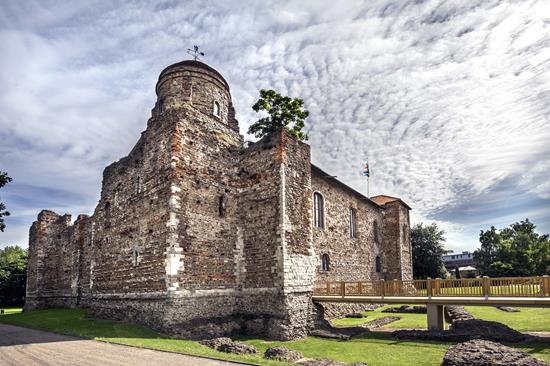Colchester Castle
- Posted in:
- Roman medieval castle temple
 This Norman keep known as Colchester Castle was built around AD 1078 on the foundations of the Roman Temple of Claudius. It was built in at least two main phases and its initial form consisted of a single-storey stone keep with crenellated parapet wall. During the early 12th century, the keep's outer walls were raised by at least one storey and a fore-building was added on the south side to protect the main entrance. A barbican replaced this in the 13th century. The castle's earthwork defences consisted of an upper and 'nether' or lower bailey bank and ditch (to the north, and down-slope to the town wall) with at least one entrance in the upper bailey's south-west corner. The upper bailey defences had been built by 1101. The northern and eastern arms of the upper bailey defences survive as landscaped earthworks within Castle Park. The southern arms lies just to the north of the High Street, and the western arm, below or just to the east of Maidenburgh Street. The nether bailey is possibly part of a second phase, of the late 12th century. The southern end of the eastern arm of the nether bailey survives as a landscaped ditch in Castle Park. The western arm lies below or just to the east of Maidenburgh Street. A masonry chapel and domestic buildings stood to the south of the keep. The keep was partially demolished in the 17th century.
This Norman keep known as Colchester Castle was built around AD 1078 on the foundations of the Roman Temple of Claudius. It was built in at least two main phases and its initial form consisted of a single-storey stone keep with crenellated parapet wall. During the early 12th century, the keep's outer walls were raised by at least one storey and a fore-building was added on the south side to protect the main entrance. A barbican replaced this in the 13th century. The castle's earthwork defences consisted of an upper and 'nether' or lower bailey bank and ditch (to the north, and down-slope to the town wall) with at least one entrance in the upper bailey's south-west corner. The upper bailey defences had been built by 1101. The northern and eastern arms of the upper bailey defences survive as landscaped earthworks within Castle Park. The southern arms lies just to the north of the High Street, and the western arm, below or just to the east of Maidenburgh Street. The nether bailey is possibly part of a second phase, of the late 12th century. The southern end of the eastern arm of the nether bailey survives as a landscaped ditch in Castle Park. The western arm lies below or just to the east of Maidenburgh Street. A masonry chapel and domestic buildings stood to the south of the keep. The keep was partially demolished in the 17th century.
Colchester Castle is now home to Colchester Castle Museum where visitors can explore the Roman vaults and visit the roof of the castle for panoramic views around the town. The museum's collections focus on the history of Colchester and include many very significant finds such as the Kelvedon Warrior and the 'Fenwick hoard', a collection of Roman jewellery found under the Fenwick store on High Street, Colchester.